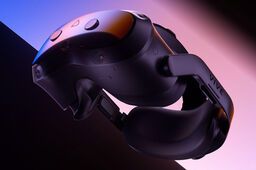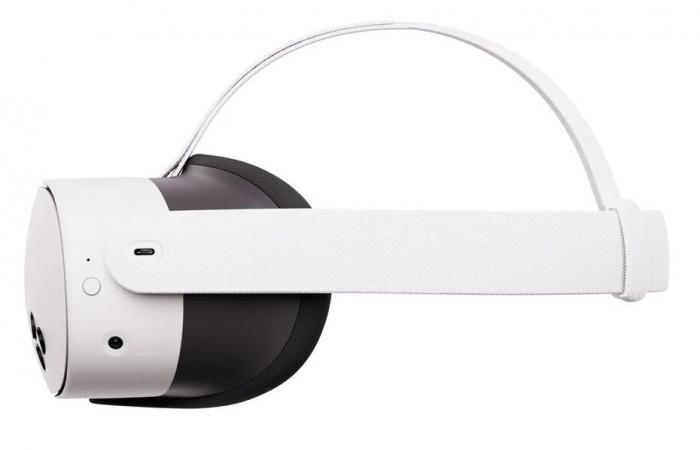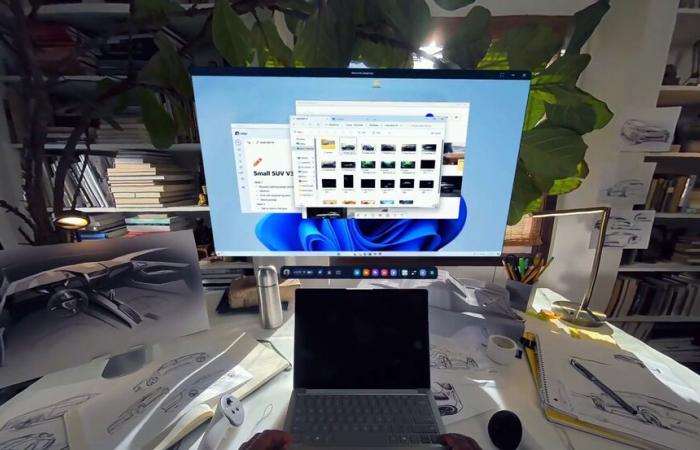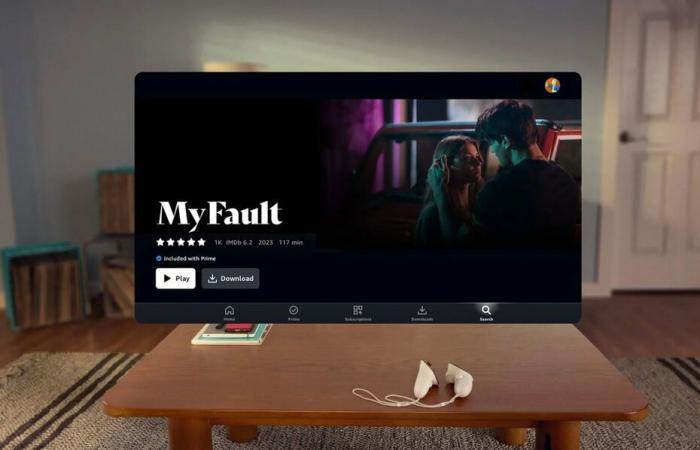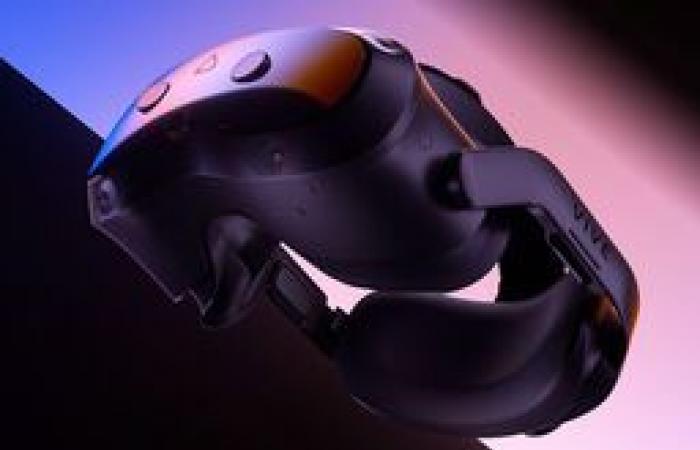Unlike the Orion glasses, it was without fanfare that Meta formalized the Quest 3S, its new entry-level mixed reality headset, during its Meta Connect conference on September 25. Its existence, its technical characteristics and its price had been known for months following various leaks and indiscretions. It will be available on October 15.
A Quest 3, but with the screen and lenses of the Quest 2
As a reminder, it replaces the Quest 2, which Meta continued to sell alongside the Quest 3 released a year ago. It is sold for 329.99 euros for the model with 128 GB of storage and has the same computing power as the Quest 3, with a Snapdragon XR2 Gen 2 processor provided by Qualcomm. It also has the same Touch Plus controllers and equivalent mixed reality capabilities, although its camera modules are different (no depth sensor, but two infrared LEDs).
It is at the level of the display that the sacrifices were made to reach this unbeatable price, the Quest 3S using the LCD screen (with a resolution of 1832 x 1920 pixels per eye) and the Fresnel lenses of the Quest 2 (with a horizontal field of view of 96 degrees). In comparison, the Quest 3 benefits from new generation pancake lenses (110° horizontal field of vision) and two LCD screens (2064 x 2208 pixels per eye), but its price remains 549.99 euros with 512 GB of storage .
The Quest 3S is one centimeter wider than the Quest 3 but weighs the same. Its 4324 mAh battery allows two and a half hours of autonomy. Unfortunately: it does not have a 3.5 mm jack port to connect headphones, you have to use the USB-C port. On the other hand, it is equipped with a new action button which allows you to move more quickly from “100% immersive” mode to “passthrough” (where you see your real environment through the cameras).
It is also compatible with certain Quest 3 accessories such as the Elite Strap, the carrying case or the Link cable, but not the charging station or the facial foams (sorry, the “facial interfaces”).
Reach the “mass market”
With the Quest 3S, Meta hopes to repeat the commercial feat of the Quest 2, whose sales are estimated at more than 20 million units to date. Its initial price (and the fact that it does not require another device to operate) is decisive in hoping to achieve this. For its part, the Quest 2 will take a well-deserved retirement (it was released in September 2020) by the end of the year, just like the Quest Pro, which turned out to be a commercial failure despite several good ideas .
The first big games exclusive to Quest 3 (not backwards compatible with old models) will soon arrive on the market, and this is the other interest of the 3S. Any purchase of a helmet will also be accompanied by the new game Batman: Arkham Shadow, developed by Camouflaj, one of Meta’s internal studios. Three months of subscription to the Meta Quest+ service (which gives access to a catalog of games that changes every month) will also be offered.
Future owners will also be able to count on the upcoming releases of Metro Awakening, Behemoth, Just Dance VR, Triangle Strategy (a tactical role-playing game that has been adopted for VR), in addition to classics like Asgard’s Wrath 2, Red Matter 2, and The Walking Dead: Saints & Sinners which received graphical updates to take advantage of the power of Quest 3 and 3S. Meta also always puts forward the sports dimension with Supernatural, but also the new fitness application Alo Moves XR, which promises photorealistic coaches. A “special sports” facial foam will also be offered exclusively for the Quest 3S.
Making VR headsets real computers
In addition to gaming and physical exercise, Meta emphasizes more general use of its headsets, including for work. An update will soon make it possible to connect your headset to a laptop running Windows 11 automatically, simply by looking at it, and without having to install dedicated software first.
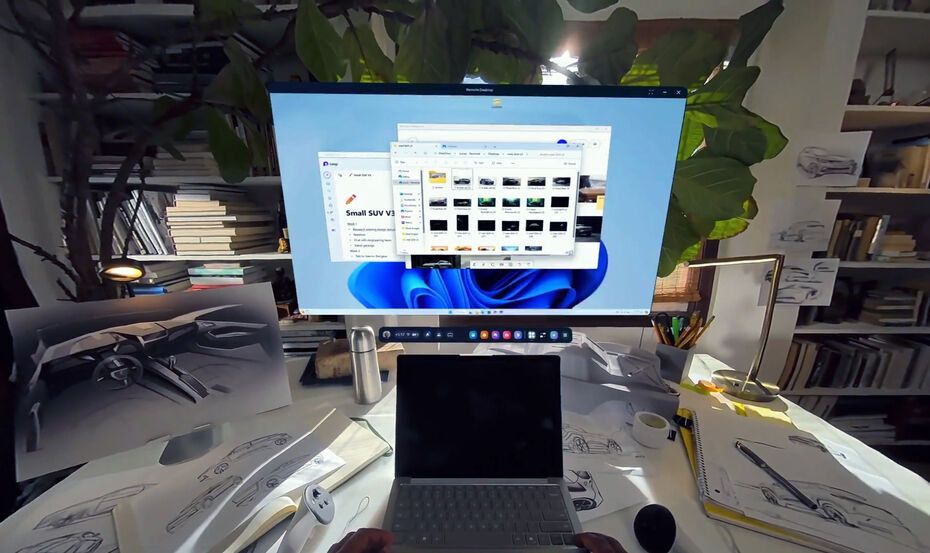
Result of a partnership with Microsoft and based on functionality “remote desktop” of Windows, this should make it possible to simplify productivity tasks, without requiring a dedicated application (such as Horizon Workrooms, Virtual Desktop or Immersed). The user only has to press a virtual button above the computer to bring up a large virtual screen (other screens can be added). The computer’s physical screen then turns off to conserve battery life. The process is similar to what Apple offers on the Vision Pro.
Horizon Hyperspace: photorealistic virtual tours
Meta presented Horizon Hyperspace, an application that allows you to visit environments captured by “gaussian splatting”the most advanced technique to date for virtualizing a 3D scene. Far from classic 360° photos without relief, the user can actually move around these environments, as if they were there. However, the technology requires a lot of computing power and runs in the cloud. It is only available in the United States at the moment. Meta presents it as a demonstration of its vision in terms of photorealism.

Welcome to mobile applications
The big news, in terms of the ecosystem, is the arrival of Android applications (for smartphones) in the Meta Store. The release of the Apple Vision Pro pushed Meta to finally allow this type of use. As Google refuses to run its Play Store on Meta devices, developers will have to port their applications themselves, but the process is simplified as much as possible thanks to a new Spatial SDK.
The return of video
One of the most obvious use cases is watching movies and videos, which was practically resurrected by the release of Apple’s headset after Meta let these features stagnate for years. A new Amazon Prime Video application is already available, and, crucially, it allows you to download videos. This means that it can be used on planes or trains, or more generally in places without a network. This capability is by far the most important for VR streaming services, and none of them offered it on Quest until now.
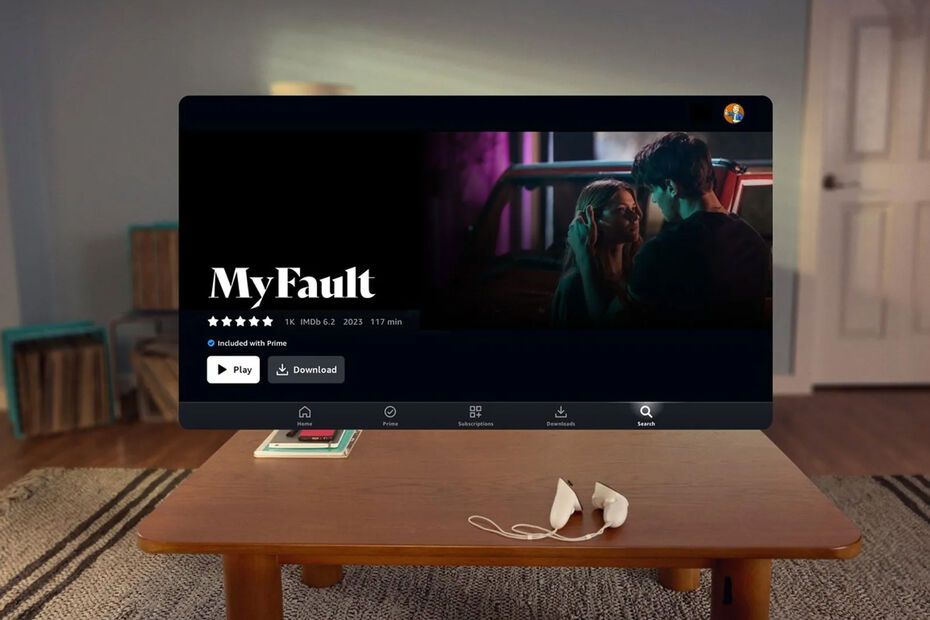
The application runs in one window and can be used in multitasking mode, with other windows alongside. It also works in passthrough mode (the user can see the environment around them). The maximum resolution for videos is 1080p. For fans of Netflix or Disney Plus, however, you always have to use the web browser. Among other new features for video, a new YouTube application will finally allow people to watch content together, a feature that was announced two years ago. Viewing is done in the home environment (Horizon Home), and it is currently in beta. Finally, Quest headsets are now compatible with Dolby Atmos sound.
In addition to opening the Meta Store to mobile applications, “progressive web apps” (PWA) are also in the game. Meta benefits here from its sustained efforts in WebXR, its browser being the benchmark of the genre. A new Spotify app takes advantage of this, which can run in the background while the user has other windows open and even has its own volume settings. A version of Wordle, the word game that caused a sensation during the Covid crisis, is also available through a web application of this type.
The Quest ecosystem is seriously lacking in AA and AAA games
The arrival of these applications is welcome and should help the transition of Quest headsets into more general-purpose devices, whereas since the first Quest they were mainly used as gaming consoles. Mark Rabkin, VP in charge of VR at Meta, said during the conference that the era of content curation is over on Quest. The second-tier app store App Lab will disappear and the Meta Store will be open to everyone. An API to access camera passthrough functionality has also been promised for next year.
Enough to make developers happy, but from a user point of view, we can only hope that the store puts in place appropriate filters so that the best games and applications are systematically highlighted. The mobile stores of Apple or Google (or even that of the Nintendo Switch) are not typically examples to follow. Because if Meta recognizes that the Quest ecosystem lacks content, we would like to remind it that it is AAA (big budget) games that we need, and not “shovelware”. On this level, Meta’s insistence on highlighting Horizon Worlds and its mini-games can be perplexing. It’s hard to see them as “system sellers”.
Selected for you
